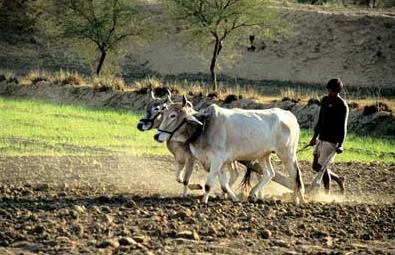Distribution of methods of committing suicide by sex across districts/divisions of Maharashta for 2001-4 is given in Table 3.1h in Annexure 5. The distribution for Maharashtra is as follows. For male suicide deaths: 34 per cent were by consuming insecticides, 8 per cent were by consuming other poison, 10 per cent were by drowning, 7 per cent were by self-immolation and the remaining 8 per cent were by other methods. For female suicide deaths, 30 per cent were by consuming insecticides, 8 per cent were by consuming other poison, 18 per cent were by hanging, 15 per cent were by drowning, 26 per cent were by self-immolation and the remaining 3 per cent were by other methods. This shows that across gender there are some differences.
The maximum proportion of suicide deaths are by insecticide consumption for both males and females. The second most common method was hanging by males whereas it was self-immolation by females. In fact, hanging by males has the maximum proportion in the divisions of Konkan and Pune and self-immolation by females has the maximum proportion in the divisions of Konkan, Nagpur and Pune. Across division, the proportion of suicide deaths by drowning is relatively much higher in Nagpur for both males and females. The involvement of females in household work brings them in close proximity to fire in the kitchen and the well for fetching water. Spur of the moment decisions might lead them to using these methods. Suicide death through burns and to some extent drowning could conceal homicide, which mostly arises out of domestic violence (see Kumar, 2003). Some of these are dowry deaths.25
In the selected districts of Washim and Yavatmal the proportion committing suicide by consuming insecticide is much higher than the state average: 59 per cent for males and 51 per cent for females in Washim and 76 per cent for males and 68 per cent for females in Yavatmal. In Wardha, the proportion committing suicide by consuming other poison (22 per cent for males and 23 per cent for females) is much higher than the state average and together with consumption of insecticide it accounts for 61 per cent of male and 53 per cent of female suicides.
Insecticide/pesticide is most commonly available in farming households (particularly, those cultivating Cotton). Thus, suicide deaths by consumption of insecticides would largely be individuals in these households. Spur of the moment decision will lead to use of this fatal method because of its easy availability. We have mentioned earlier that cotton cultivation uses nearly 90 per cent of the total pesticides used across five major crops in Maharashtra (section 2.4). Restrictions on its easy availability can help reduce incidences of suicide with such a fatal method. In this regard, important policy lessons can be taken from Sri Lanka’s experience (see references in Gunnell and Eddleston, 2003).
The maximum proportion of suicide deaths are by insecticide consumption for both males and females. The second most common method was hanging by males whereas it was self-immolation by females. In fact, hanging by males has the maximum proportion in the divisions of Konkan and Pune and self-immolation by females has the maximum proportion in the divisions of Konkan, Nagpur and Pune. Across division, the proportion of suicide deaths by drowning is relatively much higher in Nagpur for both males and females. The involvement of females in household work brings them in close proximity to fire in the kitchen and the well for fetching water. Spur of the moment decisions might lead them to using these methods. Suicide death through burns and to some extent drowning could conceal homicide, which mostly arises out of domestic violence (see Kumar, 2003). Some of these are dowry deaths.25
In the selected districts of Washim and Yavatmal the proportion committing suicide by consuming insecticide is much higher than the state average: 59 per cent for males and 51 per cent for females in Washim and 76 per cent for males and 68 per cent for females in Yavatmal. In Wardha, the proportion committing suicide by consuming other poison (22 per cent for males and 23 per cent for females) is much higher than the state average and together with consumption of insecticide it accounts for 61 per cent of male and 53 per cent of female suicides.
Insecticide/pesticide is most commonly available in farming households (particularly, those cultivating Cotton). Thus, suicide deaths by consumption of insecticides would largely be individuals in these households. Spur of the moment decision will lead to use of this fatal method because of its easy availability. We have mentioned earlier that cotton cultivation uses nearly 90 per cent of the total pesticides used across five major crops in Maharashtra (section 2.4). Restrictions on its easy availability can help reduce incidences of suicide with such a fatal method. In this regard, important policy lessons can be taken from Sri Lanka’s experience (see references in Gunnell and Eddleston, 2003).

